
Journal of Physics-Complexity
Scope & Guideline
Bridging Theory and Application in Physics and Complexity
Introduction
Aims and Scopes
- Complex Networks and Graph Theory:
Research on the structure and dynamics of complex networks, utilizing graph theory to understand connectivity, community detection, and network robustness. - Statistical Physics in Complex Systems:
Application of statistical physics principles to study emergent behaviors in complex systems, including phase transitions and critical phenomena. - Dynamical Systems and Chaos:
Investigation of chaotic dynamics, bifurcations, and stability in various systems, with a focus on understanding transient behaviors and synchronization. - Modeling and Simulation Techniques:
Development of new modeling approaches, including agent-based models and computational simulations, to explore complex interactions in socio-economic, ecological, and technological systems. - Interdisciplinary Applications:
Integration of concepts from physics, biology, social sciences, and economics to address complex challenges, demonstrating the journal's commitment to cross-disciplinary research. - Machine Learning and Data Science:
Utilization of machine learning techniques to analyze complex datasets, enhance predictive modeling, and improve understanding of complex interactions.
Trending and Emerging
- Complex Adaptive Systems:
Research increasingly focuses on complex adaptive systems, exploring how agents interact and adapt within dynamic environments, which is crucial for understanding ecological and social phenomena. - Resilience and Robustness in Networks:
There is a growing emphasis on studying resilience and robustness in complex networks, particularly in response to external perturbations and failures, which is vital for infrastructure and ecological sustainability. - Epidemiological Modeling:
The journal has seen a surge in studies related to epidemiological modeling, especially in light of global health challenges, demonstrating the relevance of complex systems theory in understanding disease dynamics. - Data-Driven Approaches:
Emerging themes include the application of data-driven methods, such as machine learning and AI, to uncover patterns and insights in complex systems, enhancing predictive capabilities and understanding. - Interconnected Systems and Globalization:
Research focusing on the interconnectedness of global systems, including economic and environmental networks, is trending, reflecting the complexities of globalization and its impacts.
Declining or Waning
- Traditional Linear Models:
There has been a noticeable decline in research focused on traditional linear modeling approaches as the journal increasingly emphasizes non-linear dynamics and complex interactions. - Basic Statistical Analysis:
Research that relies solely on basic statistical methods without incorporating complex system dynamics or network structures has become less frequent, reflecting a shift towards more sophisticated analytical techniques. - Single-Disciplinary Studies:
Papers focusing exclusively on a single discipline without interdisciplinary connections have waned, indicating a trend towards integrating multiple fields to address complex problems. - Static Network Models:
Research centered on static representations of networks is declining, with a growing emphasis on dynamic and evolving network structures that better represent real-world complexities. - Overly Simplistic Agent-Based Models:
Simplistic agent-based models that do not account for significant interactions or complexities are becoming less favored, as the journal seeks more nuanced and detailed modeling frameworks.
Similar Journals
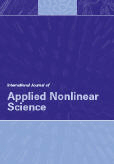
International Journal of Applied Nonlinear Science
Unraveling Complexity: The Intersection of Theory and ApplicationInternational Journal of Applied Nonlinear Science, published by INDERSCIENCE ENTERPRISES LTD, is a leading platform dedicated to the dissemination of innovative research in the field of nonlinear science. With an emphasis on applied methodologies, this journal focuses on the practical implementations of nonlinear theories across various disciplines, including engineering, physics, and applied mathematics. Contributions to the journal foster interdisciplinary dialogue, encouraging the exploration of complex systems and their behaviors. Although currently not an open-access publication, its accessibility through institutional subscriptions ensures that essential research reaches a wide audience. The journal seeks to provide a forum for the exchange of ideas and advancements that push the boundaries of conventional science, thereby appealing to researchers, professionals, and students alike who are eager to engage with cutting-edge developments in nonlinear science.

DISCRETE AND CONTINUOUS DYNAMICAL SYSTEMS
Bridging theory and practice in mathematical sciences.DISCRETE AND CONTINUOUS DYNAMICAL SYSTEMS is a prestigious academic journal published by the American Institute of Mathematical Sciences (AIMS), dedicated to the dissemination of high-quality research in the fields of Discrete Mathematics, Applied Mathematics, and Dynamical Systems. With an impressive impact factor that places it in the Q1 quartile of several mathematical categories, including an outstanding rank of #20 in Discrete Mathematics and Combinatorics, this journal serves as an essential platform for researchers, professionals, and students to explore innovative methodologies and applications. Since its inception in 1996, the journal has partaken in the convergence of mathematical theories, with its editorial board committed to publishing cutting-edge studies up until 2025. Although it is not open access, the journal's rigorous peer-review process ensures that each article maintains the highest scholastic standards, making it a vital resource in the advancement of mathematical sciences.
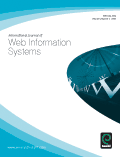
International Journal of Web Information Systems
Illuminating the path to digital excellence.The International Journal of Web Information Systems is a distinguished publication dedicated to advancing the field of web information systems, offering a platform for high-quality research and innovative practices. Published by EMERALD GROUP PUBLISHING LTD in the United Kingdom, this journal has established itself as a vital resource for researchers, practitioners, and academics from various disciplines, particularly in Computer Networks and Communications and Information Systems, as evidenced by its ranking in the 2023 quartile assessments (Q3) and Scopus rankings. With an H-index reflecting its impact within the academic community and a publication window spanning from 2005 to 2024, the journal is committed to fostering scholarly exchange and collaboration. While it currently does not have open access options, it provides valuable insights and breakthroughs that are essential for professionals and students navigating the ever-evolving digital landscape.

Big Data Mining and Analytics
Exploring the Future of Big Data AnalyticsBig Data Mining and Analytics, published by TSINGHUA UNIVERSITY PRESS, stands at the forefront of interdisciplinary research in the fields of Artificial Intelligence, Computer Networks and Communications, Computer Science Applications, and Information Systems. With an impressive Q1 ranking in multiple categories as of 2023, this journal serves as a critical platform for researchers and professionals eager to explore innovative techniques and methodologies related to big data analytics. Since its transition to Open Access in 2018, Big Data Mining and Analytics has aimed to increase the visibility and accessibility of its cutting-edge research, making permanent strides in the global academic landscape. Housed in Beijing, China, and actively embracing the converged years from 2018 to 2024, the journal aims to cultivate a rich discourse on emerging trends and applications, ensuring its relevance in a rapidly evolving technological environment. Join a vibrant community of scholars dedicated to advancing the frontiers of knowledge in big data.

Eurasian Journal of Mathematical and Computer Applications
Advancing the Frontiers of Mathematical and Computational Innovation.Eurasian Journal of Mathematical and Computer Applications, published by the prestigious L N GUMILYOV EURASIAN NATIONAL UNIVERSITY in Kazakhstan, stands as a vital platform for researchers and professionals engaging in the fields of Applied Mathematics, Computational Mathematics, Computer Science Applications, Information Systems, Mathematical Physics, and Modeling and Simulation. With its ISSN 2306-6172 and E-ISSN 2308-9822, this academic journal aims to foster innovative research and facilitate knowledge transfer in these interdisciplinary domains. The journal, which converges its endeavors from 2013 to 2024, is currently ranked Q3 across its various categories in 2023, reflecting its growing influence and commitment to academic excellence. Despite its open access availability, the journal's dedication to quality research is evident as it attracts contributions that not only advance theoretical understanding but also address practical applications. With a supportive community of researchers in an increasingly important field, the Eurasian Journal of Mathematical and Computer Applications is poised to remain a significant resource for those seeking to propel the boundaries of mathematical and computational sciences.

Top
Exploring the Intersection of Theory and Application in MathematicsTop is a prestigious academic journal published by Springer, dedicated to advancing research in the fields of Discrete Mathematics, Combinatorics, Information Systems and Management, Management Science and Operations Research, Modeling and Simulation, and Statistics and Probability. With its ISSN 1134-5764 and E-ISSN 1863-8279, this journal holds a commendable Q2 ranking across multiple categories as of 2023, evidencing its strong impact within the academic community. The journal has experienced a significant convergence of knowledge from the years 1993 to 1996, 2003, and is active until 2024, showcasing its long-standing commitment to scholarly excellence. Although it does not currently offer Open Access options, its quality is reflected in Scopus rankings, notably being in the 97th percentile for Discrete Mathematics and Combinatorics. Researchers, professionals, and students in these domains are encouraged to engage with Top as it continues to facilitate groundbreaking insights and foster collaboration among various disciplines.
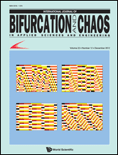
INTERNATIONAL JOURNAL OF BIFURCATION AND CHAOS
Unraveling the Mysteries of Chaos TheoryINTERNATIONAL JOURNAL OF BIFURCATION AND CHAOS is a premier scholarly publication renowned for its focus on the intricate dynamics of bifurcation and chaotic systems across various scientific disciplines. Established in 1996 and published by World Scientific Publishing Co Pte Ltd, this journal plays a significant role in fostering interdisciplinary research within the realms of applied mathematics, engineering, and modeling & simulation, boasting impressive quartile rankings of Q1 in Multidisciplinary studies and Q2 across other key categories as of 2023. With an active convergence of cutting-edge research and comprehensive reviews, this journal engages with the academic community by providing a platform for novel findings and theoretical advancements. Researchers, professionals, and students alike will benefit from its rich content, reflecting the ever-evolving landscape of complexity science. Access to the journal is subscription-based, ensuring a curated selection of high-impact articles that adhere to the highest standards of academic excellence.
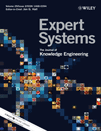
EXPERT SYSTEMS
Elevating Knowledge in Control, Systems Engineering, and Theory.EXPERT SYSTEMS is a prestigious journal published by WILEY, dedicated to advancing the fields of Artificial Intelligence, Computational Theory and Mathematics, Control and Systems Engineering, and Theoretical Computer Science. Established in 1984, this journal has consistently provided a platform for rigorous research, showcasing innovative methodologies and applications that drive the future of intelligent systems. With an impressive impact factor and Scopus rankings placing it among the top quartiles within its categories, EXPERT SYSTEMS is a vital resource for researchers, professionals, and students seeking to deepen their understanding of complex systems and their applications. The journal is not currently an Open Access publication, emphasizing its commitment to high-quality, peer-reviewed research that impacts the global academic community. With a convergence year extending to 2024, it prepares to continue its legacy as a cornerstone of knowledge in these dynamic fields.
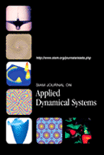
SIAM JOURNAL ON APPLIED DYNAMICAL SYSTEMS
Advancing the Frontiers of Dynamical Systems Research.SIAM Journal on Applied Dynamical Systems, published by SIAM Publications, stands as a premier platform for disseminating vital research in the fields of applied dynamical systems, analysis, and modeling and simulation. With a commendable impact factor reflecting its scholarly influence, this journal ranks in the Q1 category for both analysis and modeling/simulation in 2023, positioning it among the top resources in these disciplines. Enthusiastic researchers, professionals, and students will benefit from its rigorous peer-reviewed content that spans innovative methodologies and applications in various scientific domains. Since its inception in 2002 and continuing through 2024, the journal aims to bridge theoretical insights with practical challenges, facilitating advancements that drive progress in dynamical systems research. Contributors and readers alike can expect to engage with high-quality articles that foster meaningful dialogue, making this journal an indispensable resource for the academic community.
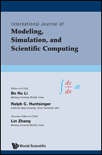
International Journal of Modeling Simulation and Scientific Computing
Connecting Theory and Practice in Modeling and SimulationThe International Journal of Modeling Simulation and Scientific Computing, published by WORLD SCIENTIFIC PUBL CO PTE LTD, is a pivotal resource in the realms of Computer Science Applications and Modeling and Simulation. With an ISSN of 1793-9623 and an E-ISSN of 1793-9615, this journal serves as a platform for innovative and high-quality research from 2010 to 2024, contributing to the advancement of methodologies and applications in various scientific fields. Although currently categorized in the Q4 quartile for both recognized domains and positioned in the 42nd and 36th percentiles in the Scopus rankings for Mathematics and Computer Science respectively, the journal encourages scholarly exchange and fosters the integration of modeling and computational analysis in scientific research. Researchers, professionals, and students alike will find this journal an essential tool to stay updated with trends, methodologies, and cutting-edge findings in simulation and computational techniques that drive scientific inquiry today.